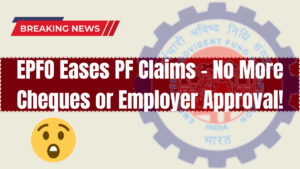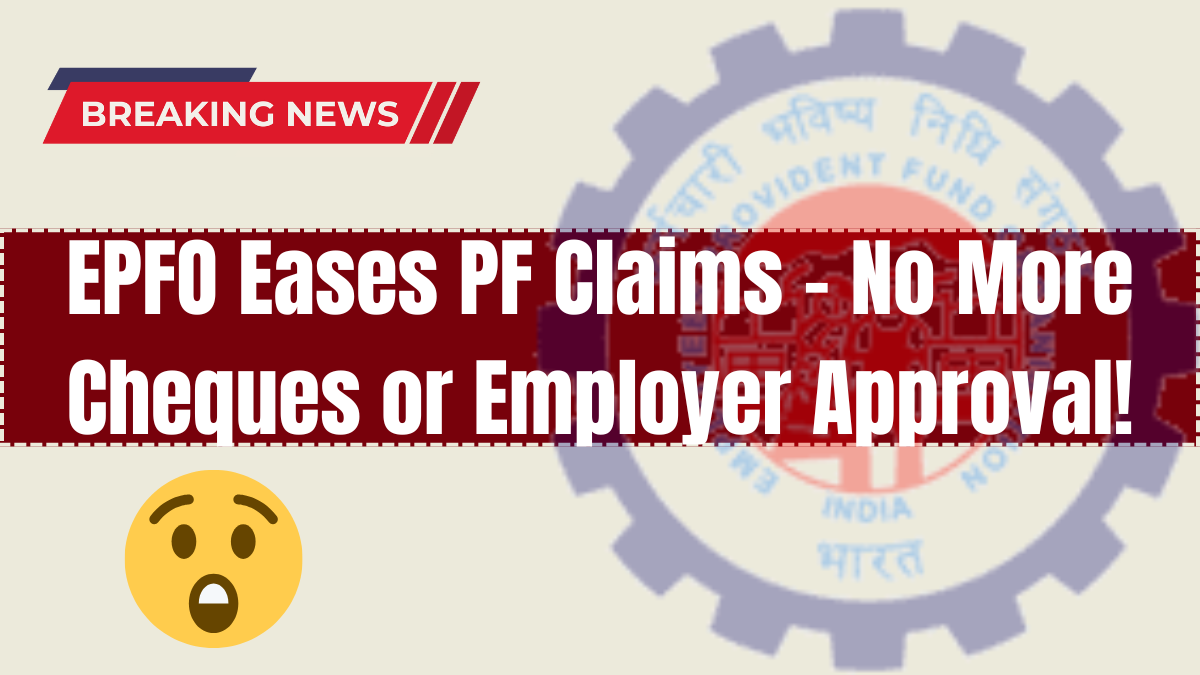In a significant move to streamline the Provident Fund (PF) claim process, the Employees’ Provident Fund Organisation (EPFO) has introduced two new reforms that will benefit over 7.7 crore members. The reforms aim to make the claim settlement process faster and more efficient, addressing common complaints such as claim rejections due to poor-quality documentation.

What Has Changed in the EPFO Claim Process?
The new reforms will make EPF claims easier by eliminating the need to upload images of cheque leaves or verified bank passbooks while filing online claims. This move is expected to significantly reduce the paperwork required from EPF members and help speed up claim settlements.
Previously, members were required to upload these documents to verify their bank account details during the PF withdrawal process. With this new rule, members no longer need to provide this additional documentation, as the bank account holder’s name is already verified when the **account is linked with the Universal Account Number (UAN).
The Success of the Pilot Project
This change comes after the successful implementation of a pilot project launched on May 28, 2024. During this pilot, over 1.7 crore EPF members benefited from the relaxation, which allowed the elimination of cheque image uploads and bank passbook verification. The success of this initiative led to the decision to extend this facility to all EPFO members across the country.
Removal of Employer Approval for Bank Account Seeding
In addition to the elimination of cheque uploads, EPFO has also removed the requirement for employer approval for bank account seeding. Previously, after members completed the bank verification process, they had to wait for employer approval before their bank account was successfully linked with their UAN.
With the new rule in place, members can now update their bank account details (including new bank numbers and IFSC codes) without needing employer intervention. This change is expected to speed up the process, especially for the 14.95 lakh members whose bank account approvals are still pending at the employer’s end.
Benefits of the New Rules
These changes will:
-
Speed up the PF claim process by eliminating unnecessary documentation and approval steps.
-
Simplify the bank account linking process for members, allowing easier updates and changes to account details.
-
Reduce delays caused by employer approval backlogs, benefiting over 14.95 lakh members whose approvals were pending.
-
Allow members to update their bank details via Aadhaar OTP verification for faster processing.
The reforms will ensure that members receive their Provident Fund payouts with minimal delays and unnecessary hurdles.
Conclusion
The EPFO’s decision to simplify the PF claim process will be a game-changer for millions of members. By removing the need for cheque uploads and employer approval for bank account seeding, the claim settlement process will become faster and more accessible, providing greater convenience for all EPF members.
FAQs
What changes have been made in the EPFO claim process?
EPFO has removed the requirement to upload images of cheques or attested bank passbooks during the online claim process and eliminated the need for employer approval for bank account seeding.
Why was this change made?
This change aims to reduce the paperwork and speed up the claim settlement process for EPFO members, addressing issues like claim rejections due to poor-quality uploads.
How does the new process help members?
Members can now update their bank details and receive PF claims faster, without needing to upload additional documents or wait for employer approval.
How will these changes affect the employer’s role?
Employers no longer need to approve the bank account verification, which will significantly reduce delays caused by employer backlogs and simplify the EPF claim process.
Can members change their linked bank accounts under the new rule?
Yes, members can now update their bank account numbers and IFSC codes directly through Aadhaar OTP verification, without needing employer approval.
Click here to know more.
